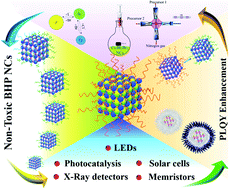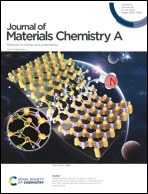Can perovskite inspired bismuth halide nanocrystals outperform their lead counterparts?
Abstract
Despite the great success of lead halide perovskites (LHPs) as the most promising semiconductors, the development of non-toxic and stable nanocrystals (NCs) remains the key obstacle to date. Under these circumstances, bismuth halide perovskite (BHPs) have gained considerable attention due to their high defect tolerance and excellent photo-, moisture, and thermal stabilities. Interest in BHPs also has stimulated investigations into colloidal nanoparticles, and empathetically the efforts of various researchers are underway to synthesize BHP NCs exhibiting similar emissive properties matching those of LHP NCs. The BHP NCs still suffer from low photoluminescence quantum efficiencies (PLQYs), large band gaps, large exciton binding energies, and effective carrier masses. Therefore, the current perspective lays out our analytical views on improving strategies for the BHP NC research to flourish. Here, we provide insights on the advances in the energy landscapes, which remain critical for various optoelectronic applications. We also provide a glimpse into the challenges, advances, and potential future directions for the uses of BHP NCs in commercial sectors ranging from LEDs, photodetectors, electronic memristors, photovoltaics and photocatalytic applications.



 Please wait while we load your content...
Please wait while we load your content...